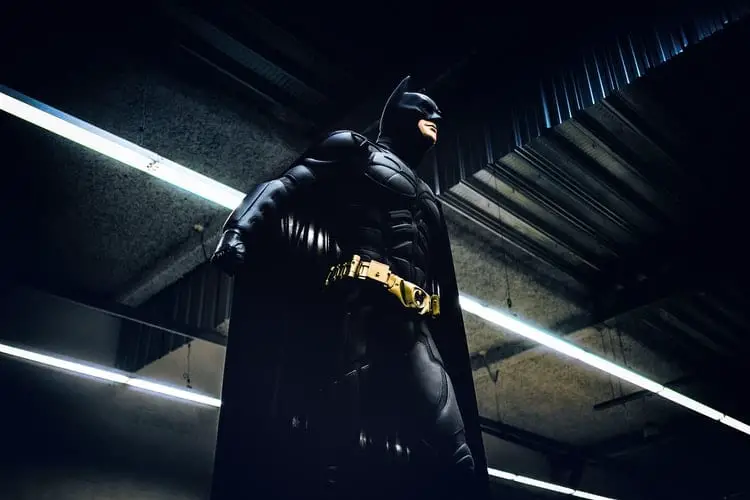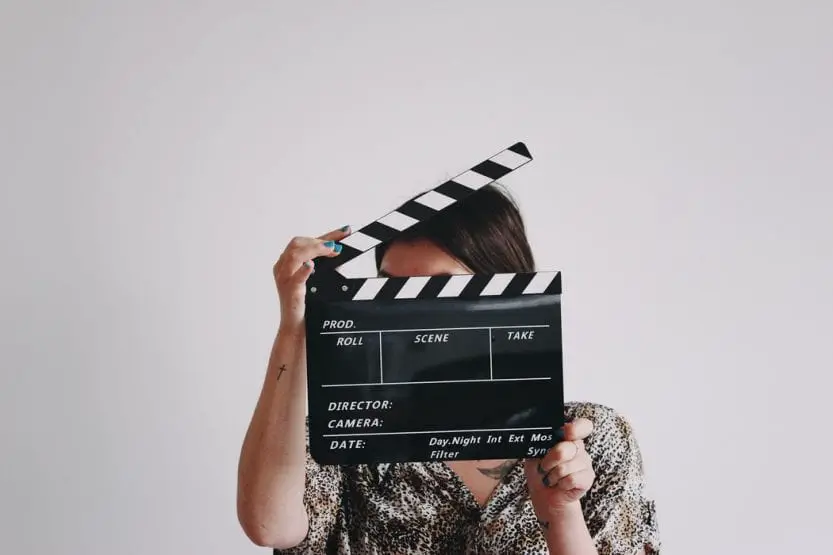Color Palette in Film
The Color Palette used in cinematography is a method that filmmakers use to effectively enhance the mood of the film. To evoke the emotions that are desired in the audience, a filmmaker will deftly weave a singular color or a combination of specific hues in a movie. This is done to bring out a visceral response in the viewer of the film. A film is made to stimulate the senses, both visually and artistically. When the color blue is used in a film, it produces a composed response in the viewer, either with the use of shadows and lights, or blue objects. This may not always be used for a calm effect. Sometimes the characters themselves are blue.
Using color in a film is done in one or more ways. Either objects of a particular tone of color or a combination of colors appear in scenes repetitively, or the lighting or backdrop exudes a subtle hue. When red is used, it usually implies something warm. It may be used in the props all over a home, like roses in every room of the house. Alternately, implying the emotion of love, red could be used on walls. Blue, as used in a color palette of a movie, implies something cold, like steel, a knife in a murder mystery, or coolness of something calm or peaceful. Blue lighting and blue objects are commonly portrayed in many realistic films and animated classics.
Let’s look at some movies that have used a strong blue color palette and explain why blue is predominant in these.
Batman movies
The director of the incredibly popular Batman series of films used a color palette that was pretty distinctive for all three Batman films. In The Dark Night, Nolan used predominantly blue objects and lighting to create contrasting effects through the movie. The whole lighting effect in the beginning is deep, dark blue. Nolan was using this to produce an aura of a calm and relaxed atmosphere. The director tries to convey the message that Batman has been instrumental in making a positive change. He has been successful in rescuing Gotham City from the cesspool of crime that it was in Batman Begins. As a result, Nolan wants to show Batman as a true blue hero. Not the vigilante that he really is.
As the film continues, the blue palette used at the start turns out to be symbolic of all that is fallacious. The promise of security soon disappears. It is used later as a means to show a corrupted, dark and cold environment, with a bleak outlook. This is the course the movie takes till its conclusion.
One of the most iconic scenes in the movie is when the villain, the Joker gets caught purposely. This is all planned by the Joker to make Batman and the police believe they’re finally on top of their game. Nonetheless, the Joker is always steps ahead of our hero and cunning enough to beat the authorities. After he’s caught, through the bars of his cell, the Joker is seen smiling and clapping for the police. He is mocking them all the way. The shot, with the Joker staring out of his cell, directly at the camera, looks cold and deadly. The scene is laced with a blue tinge in lighted areas and the rest is black and gray. The Joker’s white face looks all the more horrific due to the color play.
Titanic
A discernible quality of the director, James Cameron, is his stubbornness when it comes to using color in his movies. He regards a film’s color palette as being very relevant to the plot. In his hit movie, Titanic, Cameron cleverly used the colors red and blue together. Embellishments on the ship and certain objects were blue, and the sea was a dark, rich blue.
The sapphire pendant that Rose, the protagonist wears, is a blue object. It is significant as she throws it away, indicating her love for the impoverished Jack. The movement of the ship in the vast sea is shown several times. We see blue when Jack is about to die, and we see blue just at the moment the iceberg is going to make an impact. These are all key elements in the plot, and important moments in the movie itself. Here, blue is used for truth and for sadness, or something negative that is happening.
Avatar
In the 2009 epic film, Avatar, again by director, James Cameron, blue is a prominent part of the entire movie. The whole film uses a main motif of blue. He introduces the color blue as a welcome change as the movie progresses. The film starts off with the protagonist arriving in an army base that is ordinary and bleak. When the world of the N’avi is shown, Cameron uses a wide array of shimmering neon colors, all in blue and purple shades against it.
The N’avi, the indigenous people, are blue themselves. People are blue and so are the blue objects they possess. Through the use of light and color, Cameron amazed us with his vision of creating an alternate world of the N’avi. He used mostly an indigo dark blue, and juxtaposed it with purple and green -all nature hues. The palette ranges from Oxford Blue and Indigo to Lapis Lazuli and Carolina Blue.

Batman Returns and The Corpse Bride
Tim Burton is the most creative director around. His style is unmistakable and one that cannot be replicated by anyone else. He is a visionary and directs the morose and macabre to perfection. His craft can be easily noticed in his sets, his costumes, and his clever shots. Nonetheless, what Burton is really all about is mood. Burton’s aim is to create an innate feeling in his audience. Through the musical score, the actors he selects, and great attention to the color palette, he manages to pull off the impossible.
Interestingly, in Batman Returns, like Nolan, Burton creates a dark place between a comic book hero and a dangerous mesmerizing character. He mainly uses dark colors like blues and blacks and contrasts these with the villain’s reds and whites. In the celebrated animation, The Corpse Bride, Burton thrills us again with his twists in the tale. In giving us a true picture of death and decay, he uses the iciest and dullest blues and grays. There is contrast here too, with “hell” being full of reds and browns, to give the hot effect of fire and brimstone. Nonetheless, the icy blue objects, like dismembered bones, are contrastingly used against bright backgrounds.
The Ring
The Ring is a horror movie with all the trappings of suspense and eerie atmosphere that you would expect, yet be shocked by. The film was a Hollywood remake of an original Japanese cult classic called Ringu. The film’s theme and horrific scenes made it memorable and viewers say it is unmatched, even today. Most of the movie has a blue-gray color palette that is symbolic of the depth of water. The whole movie, even scenes that are not blatantly terrifying, is dull and gloomy. It is spooky, yet sad. It evokes pity and fear.
The gruesome spirit of a dead girl, Samara, is shown in tints of blue and ghostly white. In a shot where Samara is shown near a well, the image is wholly blue with black overtones. The well, though made of bricks, looks like a conspicuous blue object. There is also a scene with photographs with warped faces in them. That’s a memorable one and you can’t erase the blue-tinted faces from your mind. The blue color makes it look gorier and is the stuff of nightmares.
The Aviator
The use of color in Martin Scorsese’s The Aviator was an ambitious effort by the exemplary director to portray a period when Technicolor was used in film. He wanted to revitalize the era with impeccable perfection. During this era, there were blue objects everywhere. Everything seemed to have a blue hint, even grass. Scorsese wanted to be true to the time and show this. So, the skies appear aqua, the metal of the plane seems like a shining blue, and the background looks teal. In the movie, the protagonist, Howard Hughes, an airline employee, wears a blue uniform.
With the introduction of warm emotions in some scenes, Scorsese still keeps the background blue to maintain the Technicolour effect. In the early part of the film, there is a girl on a swing. This is shown with a hue of blue. The protagonist is also in it, in a light brown jacket which appears unmistakably faintly blue. Blue is illuminated against the other colors in the movie. The protagonist suffers from obsessive compulsive disorder. The lighter shades of blue alter to darker hues as this is shown stealthily creeping in.
The color blue in movies
Almost all movies in Hollywood have used the color blue at some time or other. Even if the whole movie isn’t based on a blue color palette, or blue objects, there are scenes in which blue plays a significant role. For instance, in La La Land, the whole background of the scene on the billboard is a bright blue. Against this, the character of Emma Stone is dancing with the character of Ryan Gosling. In Lost in Translation, there are scenes that are about loneliness of the characters. This is portrayed behind dull filters of blue. Rooms look filled with blue objects. Alejandro Gonzalez has intelligently used blue under and overtones in his masterpiece, The Revenant. To present a range of cold colors to take us to all the trials and tribulations of the protagonist, blue tint is used effectively.



